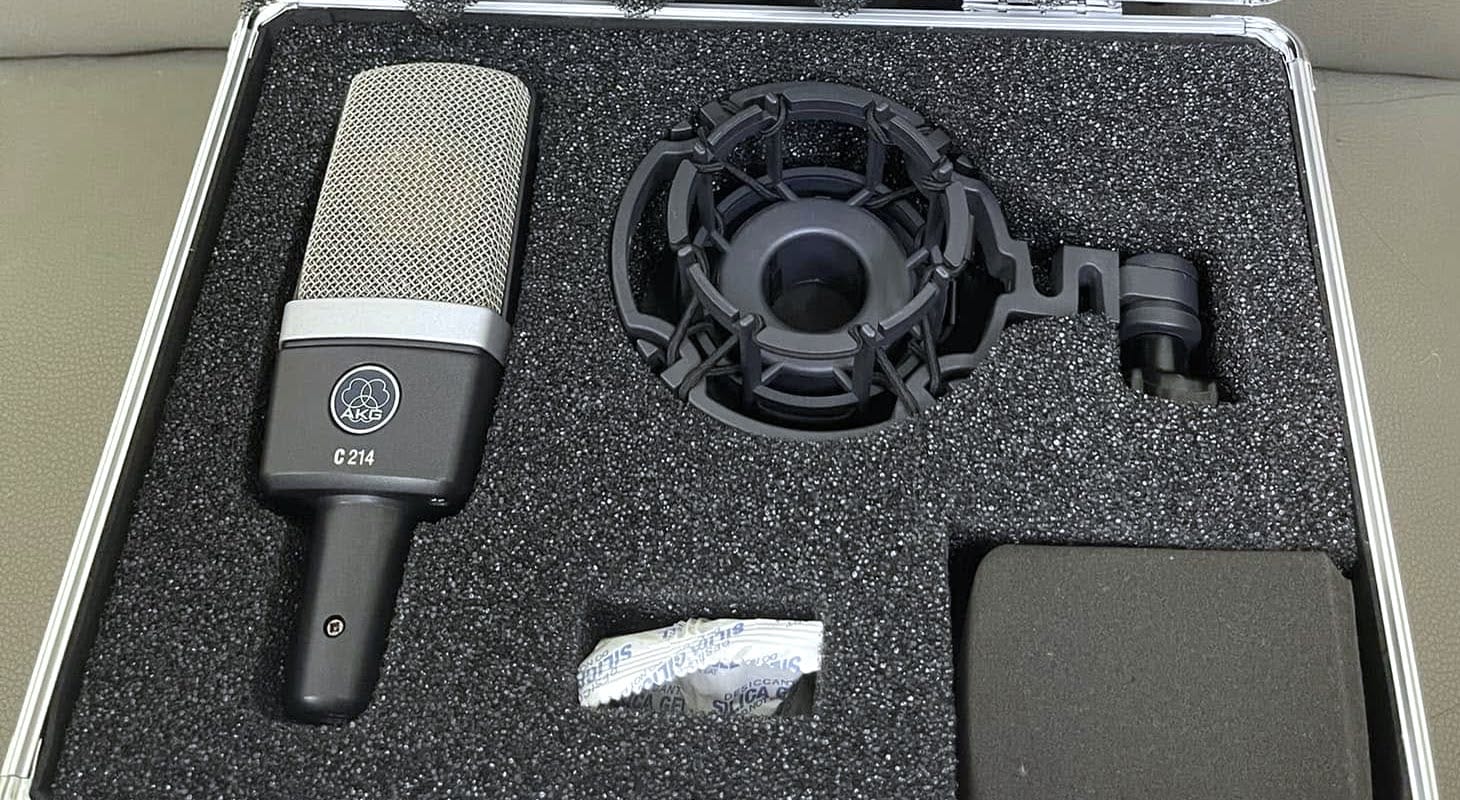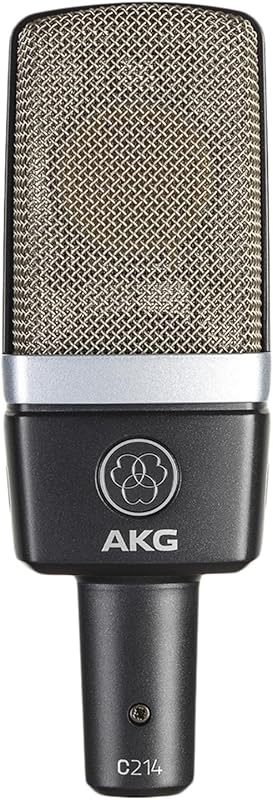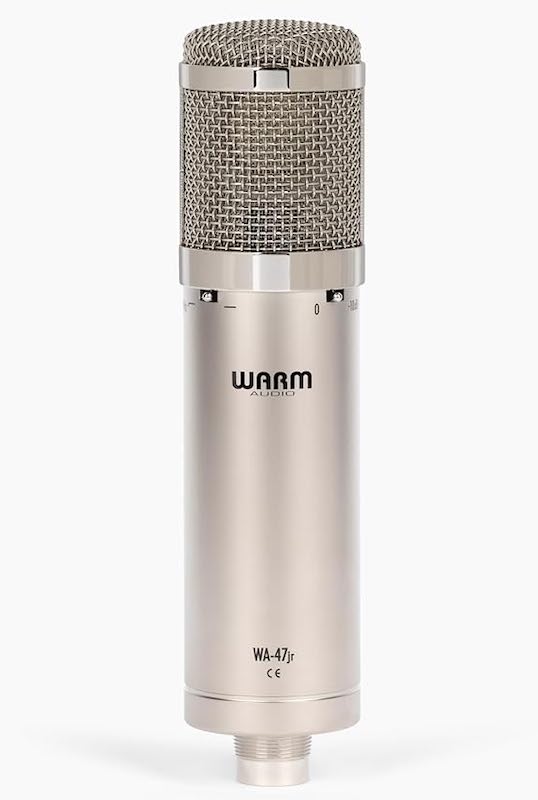It's incredible to think about how recording technology has evolved over the past 10 years. In the mid-2000s, when I first started producing tracks and bringing in recording artists and demo singers to finalize vocals, there was nothing close to today's microphone quality at such affordable prices.
I couldn't even afford a proper vocal microphone — I had to rent them by the day and hope we got all the takes we needed. I would rent a microphone on Friday just so I could have the whole weekend for the price of one day, returning it on Monday! That's how expensive professional vocal recording used to be.
Having microphones like the ones I'll discuss below seemed like an impossible dream back then.
Now, as studios have downsized and the line between professional and demo vocals has blurred, legendary upscale companies have noticed and shifted their target market.
What's shocking is how affordable these incredibly well-built, professional-level microphones have become. I've compared microphones on this list side-by-side with others that cost 10 to 40 times more, and while they're not all identical or direct replacements, they'll definitely give you professional sound. Often, they just need a touch of EQ and compression to match their extremely expensive counterparts.
It was tough to narrow it down to just five, but if I had to make a desert-island list of microphones under $500, it would be the following.
Best Vocal Microphones Under $500
1. AKG C214
I'll start with one of the most shocking price tags I've seen for such a premium company. The AKG C214 is a younger relative of the legendary C414, which has been used on probably more records than any other mic in history — both because it's a great vocal mic and a fantastic instrument mic.

AKG C214
The attraction of the original C414 XLS is that it has nine polar patterns, making it very versatile, whereas the C214 is only cardioid.
But who are we kidding?
Cardioid is probably how any engineer would set their microphone to record vocals anyway. So it's not a light or compromised budget version of the C414.
They simply took the most essential polar pattern from a mic that's well above $1,000 and gave you a very specific vocal-oriented mic at an absolutely astonishing price.
This one really is a no-brainer. It works incredibly well on vocals, but it also works on guitar amps, drums, acoustic guitars, pianos — you name it. Yes, for something like drum overheads and perhaps pianos, it would be nice to have an omni or figure-of-eight polar pattern, but for vocals, cardioid is all you need.
The appeal of the AKG C414 was always the beautiful crisp high-end that it captured from vocalists. It captured what we called the "air" or modern sweetness of both male and female vocals.
I'm happy to report that the C214 does that spectacularly well, if not exactly the same as its older sibling. This is an important quality for all of you who might be looking at this for recording in project studios where you have limited hardware equipment and might be using software to doctor up your vocal tracks.
Many producers nowadays struggle with how to polish vocals captured on budget mics. I get lots of Instagram messages, emails, and questions at trade shows like NAMM about what frequencies to use to make vocals sound less dull but not too harsh.
The answer I always give them is "use a better mic." Of course, then I tell them I'm kidding (kind of), and I offer a couple of suggestions about which plug-ins I would use to bring out a little shine.
I also ask what they're using because different brands have different deficiencies.
But if somebody asks what I do to save vocals, and I learn they're using a microphone without good high-end — especially for female vocals — I always instantly say: instead of buying 10 plug-ins or an expensive piece of hardware, go buy a C214 and re-track those vocals. You probably won't have to do much to them in the mix.
That's how important I feel it is to track vocals well from the start instead of trying to save them with software plug-ins or sending them to an engineer to pass through expensive hardware.
Another reason the C214 might be the mic for you is its incredibly high SPL level of 136 dB, and 156 dB if you're using the pad. For those not familiar with using pads on microphones: it usually drops 20 dB of the microphone's headroom so you can push the preamp harder without getting harmonic distortion, and it allows really loud levels to come through better.
That's why this is a very versatile mic to use on guitar amps too. But since we're focused on singers, this is an incredible mic for powerful vocalists singing modern pop, R&B, gospel, or even hip-hop and urban music.
What I love about high SPL mics that handle lots of sound pressure is that you can get really close to the mic's grille. This not only adds presence but captures that intimate proximity effect low-end. In this particular mic, since it's considered brighter, this totally balances out the high-end for a warm yet clear and modern sound.
If I had to find one little gripe about this mic, it's that I wish they had kept the low-cut filter options of the C414. This one cuts to 160 Hz, which I think is quite extreme — almost to the point of being unusable. The C414 cuts at 40 Hz and 80 Hz as well as 160 Hz.
The silver lining is that you can really do a lot of those cuts in post or with a decent EQ plug-in, so it's not completely a dealbreaker.
2. RODE NT2-A
You'll notice there are no Neumann microphones on this list because I wanted to focus on a specific budget range, and their mics are simply too expensive. Don't worry though — in my experience, Røde mics have always been the more affordable alternative to Neumann.
In fact, they even look remarkably similar. The Røde in a vocal booth can be easily mistaken for a Neumann U87. While both are excellent microphones, I personally prefer the sound of the NT2-A.
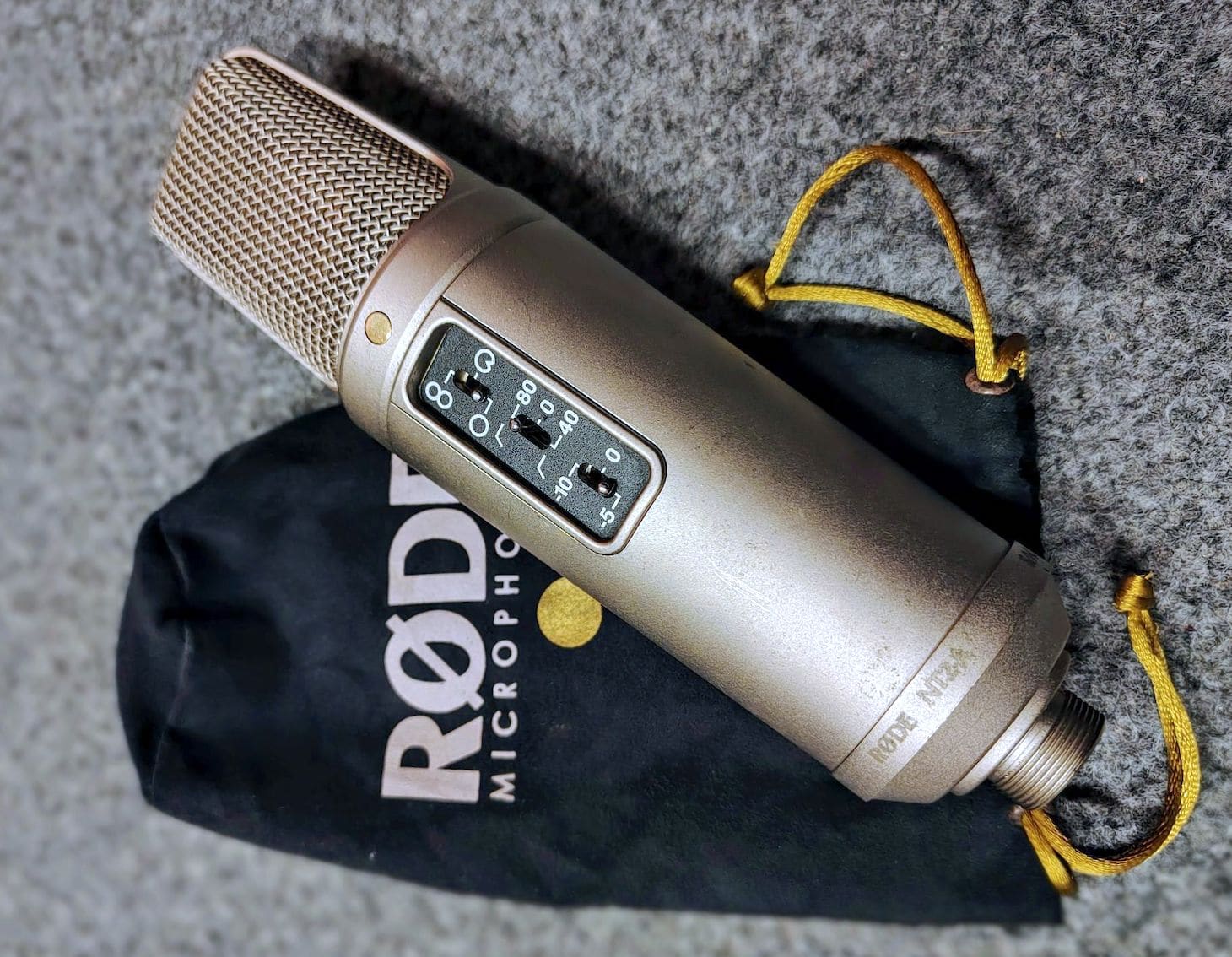
RODE NT2-A
This particular mic is priced similarly to the AKG C214 but offers much more flexibility. It includes multiple low-cut filter options and the three most commonly used polar patterns: cardioid, omni, and figure-8.
While this versatility makes it superior to the AKG, it still shines brightest with vocals.
Røde, an Australian company, set out to disrupt the microphone industry — much like its European counterpart, Blue Microphones — by avoiding the typical route of producing cheap, flashy-looking mics with low-grade components in China. Instead, they prioritized quality over appearance, though their mics are still quite attractive.
One of their greatest achievements was developing their own gold-sputtered capsule, which produces a musical, upscale sound while maintaining balanced sensitivity.
The mic's high SPL rating of 147dB makes it versatile across many musical genres. For those new to vocal recording, a higher SPL means you can record loud singers without requiring excessive compression.
When working with powerful vocalists, a high SPL microphone is essential — you don't want singers backing away from the mic just to avoid clipping with an overly sensitive device. This explains why ribbon mics have fallen out of favor for vocal recording.
I love using the NT2-A for rap and R&B because it shares a quality with the U87: the harder you push it, the more naturally it compresses and tames the high frequencies. Microphones with excessive high-end tend to sound overly sibilant, emphasizing those "s" sounds.
Rap vocals are particularly demanding since they pack more words into a shorter time frame, increasing the frequency of potentially problematic consonants like t's, p's, f's, and s's. While you can address these issues later with EQ, iZotope RX 11, or a de-esser, it's always better to capture clean audio at the source rather than fixing it in the mix.
This microphone also excels at piano recording. We're seeing a revival of upright piano, both in the vintage Coldplay/Beatles style and in the refined classical film scores of artists like Ólafur Arnalds and Max Richter.
Neoclassical piano paired with vocals has become increasingly common in pop music. This style is characterized by a soft, felt piano sound — creating a muffled effect, as if fabric covers the hammers — rather than a traditional bright grand piano tone. The NT2-A microphone is ideal for recording this style, as it can be positioned close to the hammers and soundboard. It captures transients clearly while avoiding oversensitivity, eliminating harsh attacks that could sound like clipping.
These qualities also make this mic perfect for male rock vocalists. I've recorded more than 40 rock singers with this mic, including death metal vocalists, and it's never distorted once!
Consider this mic your U87 Swiss Army knife, especially if you're working without extensive outboard gear or a high-end preamp with limiting and compression capabilities. It's particularly well-suited for male vocals.
3. Avantone Pro CV-12
Let's explore the fancy side of vocal recording with a beautiful tube microphone. While the previous two mics on the list are incredible workhorses, a tube microphone serves a more specialized purpose. The Avantone, however, is remarkably versatile.
The name suggests inspiration from the legendary — and incredibly expensive — AKG C12 microphone. When I saw the CV-12 on Sweetwater, I was immediately intrigued.

Avantone Pro CV-12
Here was an affordable tube microphone designed for modern recording environments.
By "modern recording environments", I mean recording vocals anywhere: untreated rooms, hotel rooms, even public spaces. Traditional tube microphones sounded gorgeous but struggled with noise.
Their sensitivity meant they picked up unwanted sounds like elevator hums and air conditioning in untreated spaces. Most engineers only used them in professional vocal booths with perfectly grounded power and high-end Mogami XLR cables running to dedicated preamps.
Avantone changed this perception entirely. Their mic runs quietly and handles typical apartment power issues well, thanks to its excellent PS 12 power supply. Anyone who's owned a tube mic knows how crucial the power supply is.
I learned this lesson the hard way with my Neumann M149. At a recording session in the Netherlands, I lost my power supply — whether forgotten or stolen, I'm still not sure. I thought I could easily buy a replacement. Was I wrong! The replacement power supply alone cost more than all the mics on this list combined.
Now I leave the M 149 at home and use the Avantone instead. I can travel without constant worry, and it still captures that sought-after tube sound beautifully.
The CV-12 particularly shines with female vocalists, thanks to its C12-style low boost that adds fullness to their sound. It works wonderfully for male voices too, though you might need to use the filter to tame the low end, especially with baritone singers.
With an impressive SPL of 136dB, this tube mic handles close-up recording well, delivering that intimate tube sound. For those wondering about tube microphone characteristics, beyond the signature vacuum tube warmth, these mics compress sound in a unique way.
They soften word attacks musically, transforming harsh syllables and sibilance into smoother tones. The result is that midrange "s" sounds flow more naturally than with non-tube mics.
For slower-tempo or intimate music — think singer-songwriter pieces or piano ballads — tube mics excel by capturing more detail at lower volumes. They also reduce the need for compression and harmonic enhancement during mixing.
Many affordable non-tube mics (especially those not on this list) can sound sterile, as they're often designed for podcasting or content creation. When using these to capture the beautiful vocal presence you hear on professional records, you'll need extensive mixing work, including tube emulators and compression from tools like Avalon or Manley plug-ins.
While skilled engineers can make any mic sound great, this mic is perfect for those focused on mixing who want to capture excellent vocal demos without the hassle.
4. Slate Digital VMS ML-1
We're entering territory I wouldn't have dreamed possible 10 years ago. Remember how I discussed evolution in this article's introduction? This is truly the pinnacle of that progress.
The Slate VMS ML-1 is unique — it's both a microphone and a plug-in, what's known as a modeling microphone.
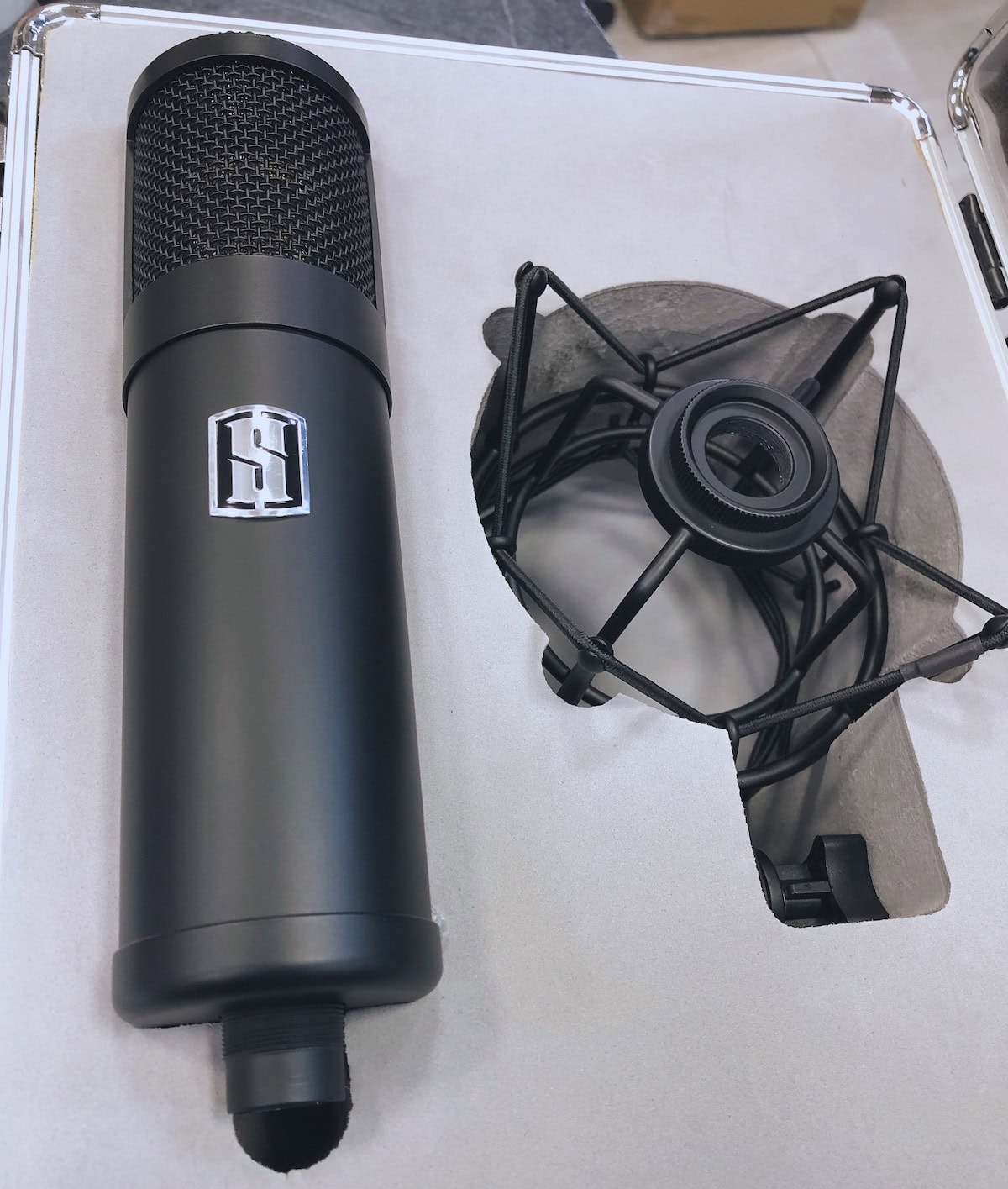
Slate Digital VMS ML-1
At its core, it's a neutral, linear microphone that adds minimal coloration to the sound. It works with a plug-in, either in real-time or during post-production, that transforms the Slate microphone into an emulation of other microphones.
Their current lineup includes models of legendary vintage microphones like the Neumann U 47, Telefunken 251, AKG C12, Neumann U 67, and the Sony C 800. For perspective: purchasing just these original microphones would cost as much as a car.
The ability to instantly switch between these emulations and achieve 80–90% of the original sound is remarkable. I own several Slate products and their access pass subscription. When I first tried using the plug-in with a different microphone, it didn't work — my Sweetwater engineer explained that the models are specifically designed for the Slate mic's frequency response and circuitry.
I was so impressed with the ML-1 that I bought their ML-2 pencil mics too. These, however, are focused on instruments.
Now, you might be skeptical, thinking this is just a decent microphone with some EQ tricks to approximate legendary mics. But it's far more sophisticated than that.
Think of these models like Universal Audio's hardware emulations. Slate has captured the essential characteristics that create each mic's signature sound.
The Sony C 800, for instance, is a tube microphone renowned in pop music for its exceptional transient response and high-end detail — all of which they've recreated. The Neumann U 47 model, by contrast, offers a darker tone with its vintage curve and distinct transient response.
When switching between models, you'll notice differences not just in EQ and color, but in compression, presence, and how the mic responds to distance.
They've thoughtfully included an intensity slider for each microphone model, allowing you to blend between the dry and processed signals. This is particularly useful since the ML-1's naturally pristine, neutral sound might already be 70% of what you're seeking.
Sometimes, applying the full model intensity might be too much, so you can dial in just the right amount of character.
This isn't snake oil — it's the real deal. Slate continues to develop new models, which they provide free of charge. The plug-in runs with minimal latency and remains stable, even on laptop setups.
It's become one of my favorite travel companions, especially when recording artists I've only heard through mastered recordings. Without hearing them sing in person, it's challenging to know which microphone would suit them best.
Having eight of history's most coveted microphones at my fingertips is incredible and gives me confidence recording anywhere. I've even recorded in people's homes when there's no need for specialized studio equipment.
Consider this the microphone world's equivalent to what plug-ins and virtual synthesizers did for mixing and tracking.
5. Warm Audio WA47 Jr
Speaking of the Neumann U 47, this Warm Audio — appropriately named WA-47 Jr. — is a direct tribute to the non-tube version of the U 47 called the U 47 FET.
It's a legendary mic used by many singers, especially in jazz. I gotta say, I really love this Warm Audio version. It looks super cool — probably the coolest one on this whole list, rivaled only by the Avantone, which naturally looks more like the C12.
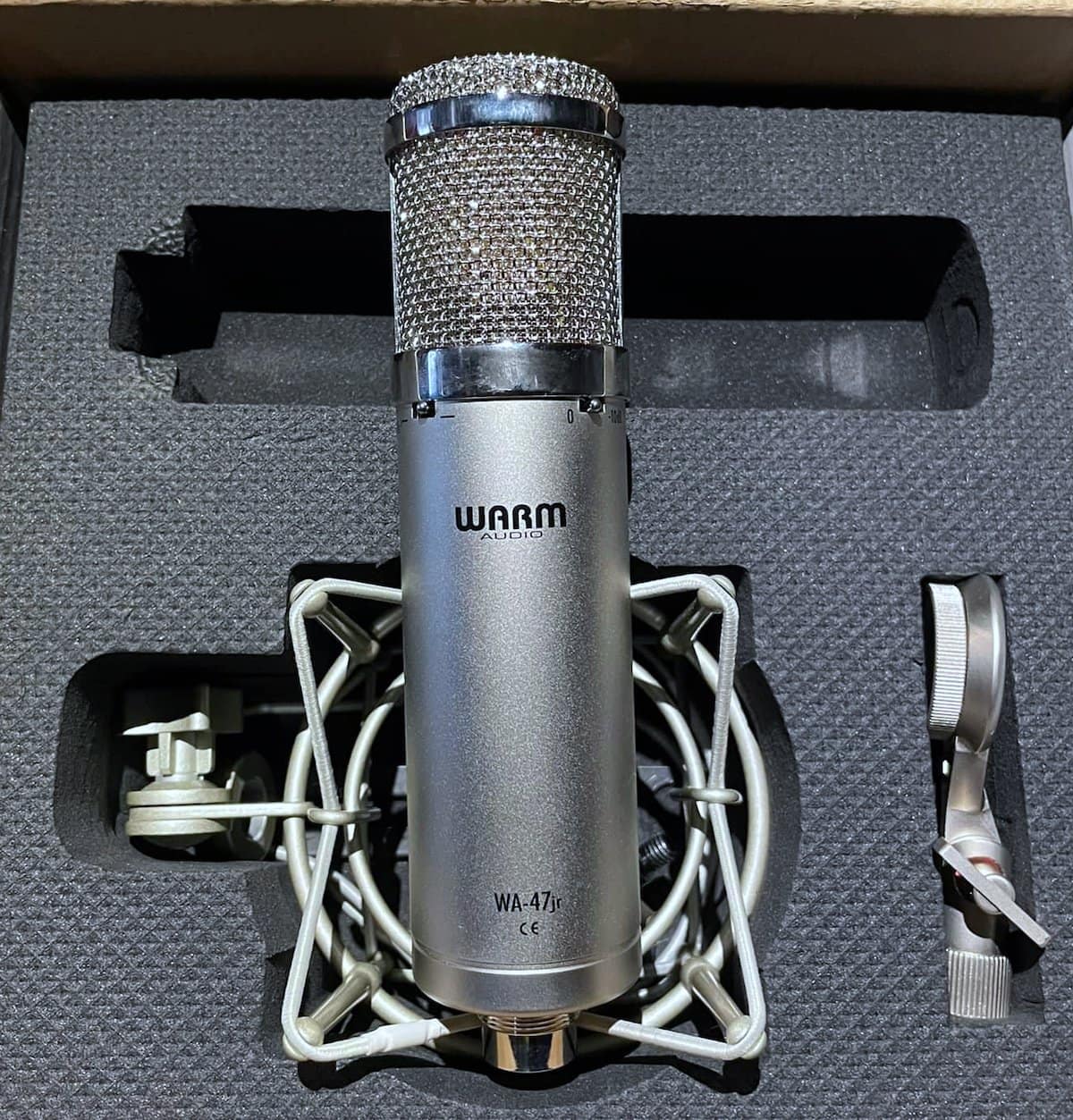
Warm Audio WA47 Jr
While looks aren't the most important thing when choosing a vocal mic, there's something to be said about a mic looking super cool in front of your singer in the booth. Come on, we live in the content age!
In this Instagram world of ours, every artist who comes into the studio takes at least 10 selfies with the microphone in the booth, then asks for a more contextual room photo of them singing on the mic.
So yes, having a really cool-looking mic that's affordable is a great idea. I've actually caught people using this as a prop — they don't even sing, but they're pretending to sing and using this mic just for their Instagram shots because it looks so cool.
But I wouldn't have it on this list just because it looks cool. It really does sound beautiful and doesn't have much overlap with the Avantone. The AKG C12 and the Neumann U 47 were very different types of microphones. This microphone is a little bit darker, but in a very natural and musical way, much like the U 47.
The reason the Neumann 47 and 87 were so legendary was that they were known to be the perfect starting point mic. At first, you might put them up and they don't really blow you away — you wonder why anyone would pay so much money for these things. But then when you add just a little bit of high-end and maybe cut a little bit of low mids, you're blown away by how much detail emerges.
You can't even understand how it sounds so great.
That's the Neumann capsule for you. From what I've heard, and even talking to people at Warm Audio, they went through extreme lengths to make a custom 47-style capsule, sputtered in gold, dual-diaphragm — and they even called it the K-47. So more than any other mic on this list, you're probably getting closer to the sound of a true vintage microphone with the Warm Audio one.
Here’s a tip: try to record in a room that has the best acoustics possible. You don't have to — it has pretty good rejection, but not as good as some of the other ones on this list.
Neither did the Neumann 47. It picked up a lot of room even in cardioid mode. That's because these were microphones that could be used for broadcast or live performance, so they didn't reject the sides as much.
This was helpful when a singer, broadcaster, or speaker was moving their head to face different sections of the audience — they wouldn't suddenly go off-axis just because they turned left or right.
Because they modeled the K-47 capsule so closely, this microphone also has that characteristic. I won't call it a problem because it isn't one, unless you're in a room with lots of reflections. If you're recording somewhere with untreated high ceilings or in a living room, make sure you get a gate or look into some reverb-reducing plug-ins because it will capture the room.
The SPL handling is fantastic because it's the FET version, not the tube, so it has film capacitors sourced from high-end Toshiba and Panasonic brands. This mic sounds like total quality.
I'm actually in awe of how they can put this price tag on a microphone that doesn't cut manufacturing corners.
I would probably have to take it apart to find where they cut corners because by listening to it, looking at it, and reading the specs, you'd think this microphone would be 2 to 3 times the price — and that's a good thing for us, isn't it?
It's also got an excellent noise ratio, so you can use this in apartments or places that might have more interference and less-than-ideal grounded power.
Overall, if you're looking for more of a vintage sound without breaking the bank or going the modeling route, look no further than this Warm Audio.
Essential Tips for Choosing a Vocal Microphone
Now that we've explored all the models in depth, I'm going to give you guidelines on how I choose which microphone to buy or use when I'm in a commercial studio.
This choice is very dependent on genre, whether your singer is male or female, and what type of acoustic environment you find yourself in. The most important criteria to pick the right mic depends on whether or not you plan on having this as your only and main mic.
Here are a few categories to check off.
Tube vs. Condenser
The main difference between the microphones on this list is whether they're tube or non-tube (solid state). Two are tube mics and two aren't. The modeling mic is unique—while not technically a tube mic, it contains multiple tube models. Depending on the intensity settings you use on the Slate modeling mic, it effectively functions as a hybrid of tube and non-tube technology.
When choosing between tube and non-tube mics for my sessions, I consider two main factors: the tone I want to achieve and the gear I have available.
One important detail I haven't mentioned yet—tube mics don't require phantom power, while solid state mics do.
If you're working with minimal equipment and only have a simple preamp for gain, a tube mic might be your best choice. However, if you have access to high-end hardware—perhaps in someone else's studio or a commercial facility—with a tube preamp (like an Avalon 737 or a Manley VoxBox), consider using a solid state microphone. I prefer pairing tube mics with solid-state preamps and solid state mics with tube preamps.
Since we're discussing affordable microphones, this principle also applies to the plug-ins you might use in the Universal Audio Apollo and UAD ecosystem.
Vintage vs. Modern
There is a big difference between the sounds of a more modern mic and a vintage mic. Even though this list is using mics that I feel have been modernized (even if they do have a vintage vibe), it's not exactly a vintage versus modern situation, but there are some mics that lean more vintage and some that don't.
For example, if you want vintage, you're better off with the Warm Audio and the Avantone, whereas if you want more modern, you're better off with the AKG and the Rode.
Tube mics themselves can be modern, but to me they skew a little bit more toward the vintage side just because there's a certain quality to tube harmonics that just makes them sound like older mics.
Again, if you can't decide between these two, the Slate might be the way to go because some of their models are very vintage-like (the Neumann U 67), but the Sony C 800 is incredibly modern sounding even though it's an older mic. Plus, the actual physical Slate ML-1 is very modern sounding.
Versatility and Features
This one is probably the toughest category because there are a lot of trade-offs on this list. I pointed them out mostly, I believe. In the spirit of cutting costs without cutting very important circuitry or quality aspects, they did trim down some of the options.
For example, the C214 might be a little bit too disappointing in that you don't really have any polar pattern except cardioid, and the low-pass cut is very extreme, unfortunately.
For many people, dealing with the plug-in and the mic on the Slate — and potential latency if your computer isn't fast enough or when using it in a very CPU-intense situation — might be a dealbreaker.
Likewise, the Warm Audio sounds incredible, but it does purposely sound vintage, so that might not be versatile enough for you.
Trade-offs are inevitable at any price tag, so again, this is one where you really have to narrow down and ask yourself "Is this going to be my only microphone?" If so, make a good list of pros and cons of what you really need.
Final Thoughts
After reviewing these microphones in detail, I'm amazed at their combination of quality and affordability. I'm not writing this as a salesman — I'm writing as a gear enthusiast who remembers when quality microphones were completely out of reach.
While I've often criticized how digital the audio world has become over the past 15 years, the hardware evolution tells a different story. Companies like Warm Audio and Slate are pioneering affordable vintage sounds, while manufacturers like Behringer and Black Lion Audio are creating excellent affordable preamps.
Together, they're making dream microphone setups accessible at incredibly reasonable prices. It's definitely a great time to be making music!

